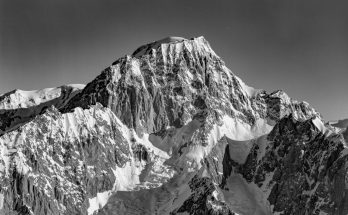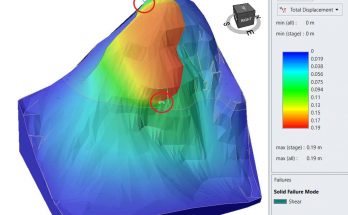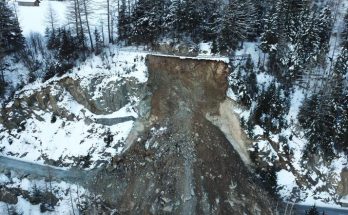Emmanuel Wyser
Director: Prof. Michel Jaboyedoff
Supervisor: MSc. Benjamin Rudaz
Water erosion phenomenons are increasingly studied and understood but raindrop erosion is far more complex. Raindrop erosion includes subprocesses such as impact, cratering, rim formation, daughter drop splash and soil particle splash. This work is focused on modeling complex ballistic trajectories of soil particle splashes and particle dispersion process. The general purpose is first to recreate the splash effect in laboratory and second to provide optimal numerical models and a better understanding of the soil particle splash.
Since the complex multiphase interactions are difficult to model, it is easier to compute numerically the dispersion process. Physical based models are the most common approach in this investigation field. The first assumption is that the crater shape might be the controlling factor in the dispersion process governed by the average splash distance. Moreover, complex physical based models may govern ballistic trajectories. These assumptions have now to be proven.
Phenomenological observations are given by experiments in laboratory, on a setup inspired by Furbish et al. (2007) study. Fine soil samples are used in this work and advanced grain size analysis is performed using laser diffraction technique. High-speed camera acquisitions and micro-LiDAR records are used throughout experimental investigations. Then, impact velocities are measured as well as crater shape or particle dispersion. Measured velocities tend to be close to those computed by numerical simulations. High-speed photography analysis shows that the mean initial splash angle is dependent on the drop penetration depth. Moreover, the mean splash angle seems to be dependent on the slope at the crater edge.
Numerical computation is then performed to model the dispersion phenomenon. Using a
probabilistic algorithm, the grain size distribution can be taken into account throughout numerical simulation. The initial splash angle mean value is derived from previous assumption about the key role of the crater shape. Gravity, drag and buoyant forces are also taken into account. Model validation is performed by comparisons between experimental and numerical results using digitalized experimental dispersion photography and LiDAR scanning. Several differences between numerical and empirical results are noticed. The shape of the particle splashing distance distribution is found to be not similar. LiDAR acquisition analysis also shows a non-spherical shape for the crater. But a statistical trend exists for the mean crater gradient -mean splash distance relationship. However this has more to do with dierential initial velocities at the crater’s edge than with mean splash angle.
Further perspectives should be oriented in multiphase interactions ( fluid to soil particle) for a better understanding of the whole phenomenon.



